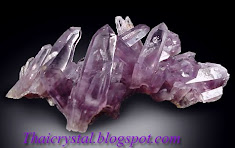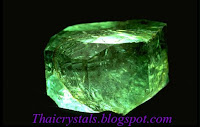Zircon Property
Zircon is a remarkable mineral, if only for its almost ubiquitous presence in the crust of Earth. It occurs in igneous rocks (as primary crystallization products), in metamorphic rocks and in sedimentary rocks (as detrital grains). Large zircon crystals are seldom abundant. Their average size, e.g. in granite rocks, is about 0.1–0.3 mm, but they can also grow to sizes of several centimeters (a few inches), especially in pegmatites.
Owing to their uranium and thorium content, some zircons may undergo metamictization. The processes, related to internal radiation damage, partially disrupt the crystal structure and partly explain the highly-variable properties of zircon. As zircon becomes more and more modified by internal radiation damage, the density decreases, the crystal structure is compromised, and the color changes.
Zircon is a common accessory mineral that occurs worldwide. Noted occurrences include: Australia; Russia (Ural Mountains); Trentino, Monte Somma, and Vesuvius, Italy; Arendal, Norway; Sri Lanka; India; Indonesia, Java, Kalimantan, Sulawesi; Thailand; Ratanakiri, Cambodia; the Kimberley mines, Republic of South Africa; Madagascar; Renfrew County, Ontario, and Grenville, Quebec, Canada; and Litchfield, Maine; Chesterfield, Massachusetts; Essex, Orange, and St. Lawrence counties, New York; Henderson County, North Carolina; the Pikes Peak district of Colorado; and Llano County, Texas in the United States. Australia leads the world in zircon mining, producing 37% of the world total and accounting for 40% of world EDR (economic demonstrated resources) for the mineral. Thorite (ThSiO4) is an isostructural related mineral.
Zircon occurs in many different colors, including red, pink, brown, yellow, hazel, black, or colorless. The color of zircons sometimes can be changed by heat treatment. Depending on the amount of heat applied, colorless, blue, and golden-yellow zircons can be made. In geological settings, the development of pink, red, and purple zircon occurs after hundreds of millions of years provided the crystal has sufficient trace elements to produce color centers. Color in this red or pink series is annealed in geological conditions above the temperature about 350 °C.

Custom Search

















































